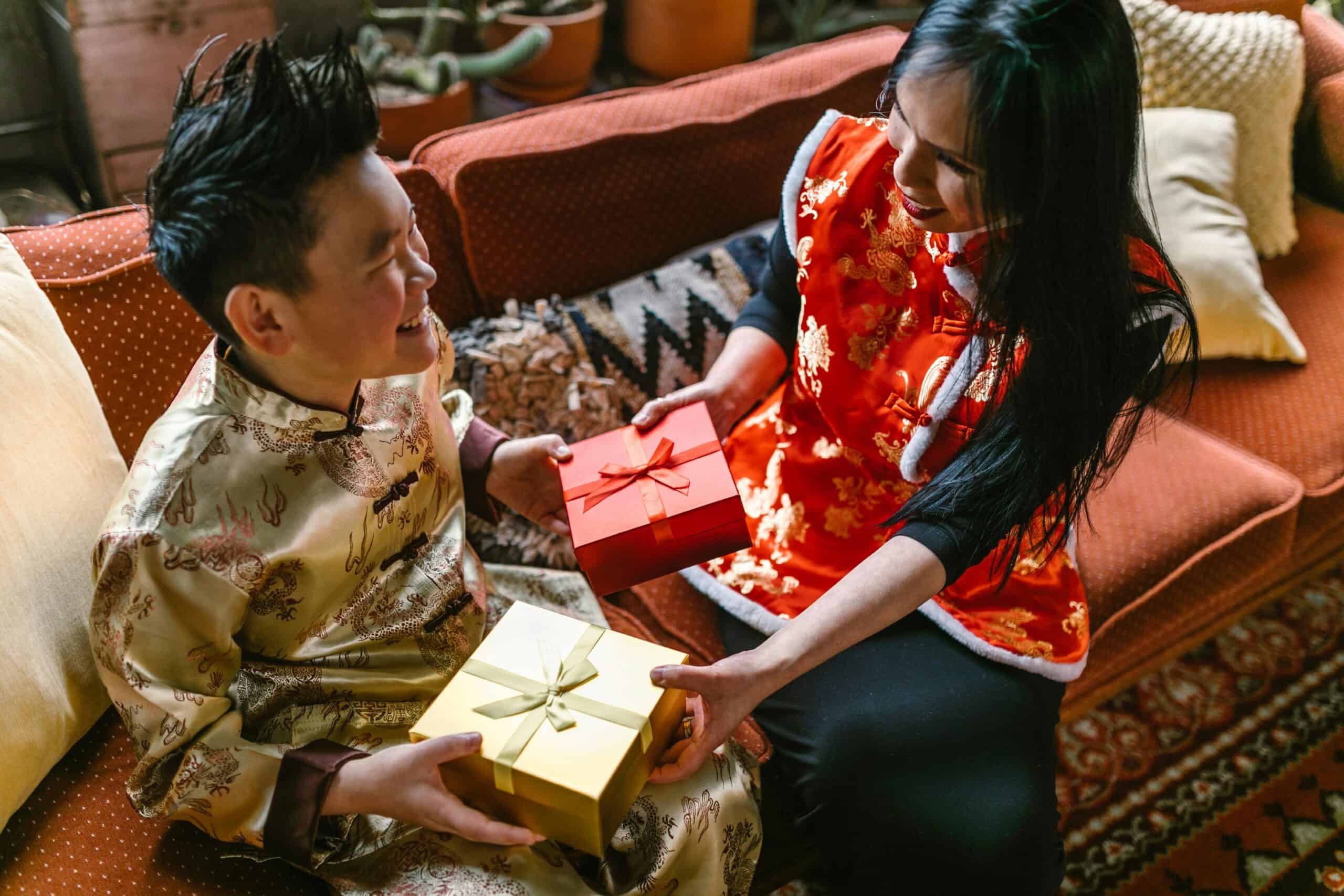Best Toppings Guide for Burning Spice Cookie (Cookie Run: Kingdom)


Lunar New Year, also known as Chinese New Year or Spring Festival, is one of the most important and widely celebrated festivals in Asian cultures. Rooted in ancient traditions, it marks the beginning of a new year based on the lunar calendar, usually falling between January 21 and February 20. The celebration is not only a time to welcome the arrival of spring but also an occasion for family reunions, honoring ancestors, and embracing hopes for health, prosperity, and happiness in the coming year.
The festival is rich with symbolism and traditions, from vibrant red decorations and festive feasts to the exchange of red envelopes filled with money. Each element of the celebration carries a deep cultural significance, making Lunar New Year a time of joy, renewal, and togetherness. As the world prepares to welcome the Year of the Snake in 2025, the Lunar New Year continues to captivate hearts with its timeless customs and festive spirit.
Lunar New Year is based on the lunar calendar, which follows the moon’s phases. It usually falls between January 21 and February 20, with 2025 beginning on January 29. Unlike fixed-date holidays, the date changes each year. This is because the lunar calendar is slightly shorter than the solar calendar. The festival begins on the second new moon after the winter solstice. This method has been used in China for thousands of years.
In China, Lunar New Year is often called the Spring Festival, marking the end of winter and the arrival of spring. It celebrates renewal, growth, and fresh beginnings. The term “Spring Festival” was popularized in modern times but has roots in ancient agricultural society. Farmers used the holiday to prepare for the planting season. Today, it’s a time to clean homes, decorate, and gather with family. The name reflects the optimism and renewal associated with spring.
Lunar New Year is closely tied to the Chinese zodiac, a 12-year cycle of animals. Each year is associated with an animal and its traits. For example, 2025 is the Year of the Snake, symbolizing wisdom, intuition, and transformation. People born in a specific zodiac year are said to share characteristics with their animal. The zodiac also influences relationships, careers, and fortunes. It’s a central theme of the celebrations.
Fireworks are used to welcome the New Year and ward off evil spirits. This custom originates from the legend of Nian, a mythical beast scared away by loud noises and bright lights. Families set off firecrackers at midnight to drive away negativity and bring good fortune. Public firework displays add to the festive atmosphere. This practice has become a global symbol of the celebration.
Before Lunar New Year, families thoroughly clean their homes to sweep away bad luck. This practice symbolizes making space for good fortune in the new year. However, cleaning on New Year’s Day is taboo, as it’s believed to sweep away the luck that has just arrived. This tradition emphasizes preparation and mindfulness. Families also decorate their homes with red and gold for prosperity.
Red envelopes, called hongbao in Chinese, are filled with money and given as gifts during Lunar New Year. They symbolize good luck and are traditionally given to children and unmarried adults. The red color represents prosperity and wards off evil. The amount inside is usually an even number, as odd numbers are associated with funerals. This practice is a cherished part of the holiday.
The 15-day Lunar New Year festivities end with the Lantern Festival. People light lanterns, enjoy parades, and participate in dragon dances. Lanterns often feature riddles, and solving them is a fun activity. The festival symbolizes unity and the hope for a bright future. It’s also a time for family gatherings and special foods like sweet rice balls.
While often associated with China, Lunar New Year is celebrated in many countries, including Vietnam, South Korea, Singapore, and Malaysia. Each culture has unique traditions, such as Vietnam’s Tết and South Korea’s Seollal. Despite regional differences, the focus on family, food, and fortune is universal. It’s a testament to the festival’s widespread cultural significance.
Lunar New Year feasts feature foods believed to bring luck, such as dumplings, fish, and glutinous rice cake. Dumplings symbolize wealth because of their ingot-like shape. Fish represents surplus and abundance, often served whole for unity. Glutinous rice cake signifies growth and progress. These dishes are carefully prepared and enjoyed with family.
Lunar New Year triggers Chunyun, the world’s largest annual human migration. Millions of people travel to reunite with their families, often covering long distances. This tradition underscores the importance of family during the holiday. Transportation systems experience peak demand, and tickets often sell out months in advance. It’s a defining aspect of the celebration.
Homes, streets, and businesses are adorned with red decorations during Lunar New Year. Red couplets with auspicious phrases are hung on doors, and paper cuttings decorate windows. Lanterns, banners, and other items in red and gold are also popular. These colors symbolize luck, happiness, and prosperity. The vibrant decorations create a festive and joyful atmosphere.
Many superstitions are observed during Lunar New Year to ensure good fortune. Sharp objects like scissors are avoided, as they’re believed to cut away luck. Crying or arguing on New Year’s Day is thought to bring bad luck for the year. People also avoid using negative words. These customs reflect the emphasis on positivity and mindfulness.
Wearing new clothes during Lunar New Year is a way to symbolize a fresh start. Red clothing is particularly popular, as it attracts luck and wards off bad spirits. For children, this tradition is exciting, as it often involves receiving gifts and attention. The custom reflects the importance of renewal and optimism.
Many families visit temples during Lunar New Year to pray for health, happiness, and prosperity. Offerings are made to ancestors and deities, and incense is burned as part of the rituals. Temples are beautifully decorated for the occasion, creating a serene yet festive atmosphere. This practice highlights the spiritual aspect of the celebration.
Lunar New Year is primarily a time for family gatherings. New Year’s Eve dinner, often called the reunion dinner, is the most important meal of the year. Families come together to share traditional dishes, exchange red envelopes, and enjoy each other’s company. The holiday reinforces family bonds and unity.
Each year, people consult zodiac predictions to learn about their fortune, relationships, and career prospects. These predictions are based on the interplay of zodiac animals, elements, and other factors. Many use them as a guide for important decisions. The tradition adds an element of excitement and curiosity to the new year.
In addition to driving away evil spirits, firecrackers are believed to attract wealth and good luck. The louder and brighter the firecrackers, the better the fortune. Families set off firecrackers at midnight to welcome the New Year with a bang. The custom is both symbolic and entertaining.
Dragon and lion dances are vibrant performances that take place during Lunar New Year celebrations. They are believed to bring good luck and chase away evil spirits. The dancers, often accompanied by drummers, perform intricate routines. These dances are a visual and cultural spectacle.
Lunar New Year emphasizes sharing and generosity. Families exchange gifts, share meals, and give to the less fortunate. Businesses often distribute red envelopes or offer discounts as a gesture of goodwill. This spirit of giving enhances the holiday’s sense of community.
People exchange greetings like Gong Xi Fa Cai (Mandarin) or Kung Hei Fat Choi (Cantonese), wishing wealth and prosperity. These phrases are written on decorations and shared during visits. They reflect the optimistic and celebratory spirit of the festival.
Lunar New Year meals often include sweet treats like glutinous rice cake and sweet rice balls. These symbolize happiness and family unity. Sweet foods represent a wish for a “sweet” year ahead filled with joy and harmony. Desserts are also shared as a gesture of goodwill and generosity.
The number eight is associated with wealth and prosperity in Chinese culture due to its pronunciation, which sounds like “fortune.” This belief is reflected in many Lunar New Year practices, including gifts, decorations, and even dish arrangements. Many people also avoid the number four, as it sounds like “death.”
Respecting and honoring elders is an important part of Lunar New Year traditions. Younger family members visit their elders to pay their respects, offer gifts, and wish them good health. This practice strengthens family bonds and preserves cultural values.
Many families decorate prosperity trees, which are small trees or branches adorned with red envelopes, gold ornaments, and ribbons. These trees symbolize growth, wealth, and prosperity for the coming year. The decorations are often handmade, adding a personal touch to the tradition.
After the Lunar New Year holiday, many businesses host grand opening ceremonies to attract good fortune for the year. These ceremonies often include lion dances, firecrackers, and offerings to deities. The events are lively and meant to ensure a prosperous start to the business year.
In traditional beliefs, traveling far from home on New Year’s Day is considered bad luck. It’s thought to disrupt the balance of the new year. Families typically spend the day together, sharing meals and enjoying time at home. This tradition emphasizes stability and harmony.
In the days leading up to Lunar New Year, families stock up on supplies, decorations, and new clothes. Markets and shops are bustling with activity as people prepare for the celebrations. The shopping tradition symbolizes abundance and readiness for a prosperous year.
The New Year’s Eve reunion dinner is a lavish affair, featuring an abundance of symbolic dishes. From fish and dumplings to spring rolls and noodles, the meal reflects hopes for prosperity and happiness. Families often spend hours preparing this feast, making it a highlight of the celebration.
In countries like China, Vietnam, and South Korea, Lunar New Year is a public holiday, often lasting several days. Schools, businesses, and government offices close, allowing people to travel and spend time with family. The extended holiday underscores the importance of this festival.
At its core, Lunar New Year is about expressing wishes for health, happiness, and prosperity for loved ones. This theme is reflected in greetings, decorations, and traditions. The focus on positivity and renewal makes the festival a cherished time for millions around the world.